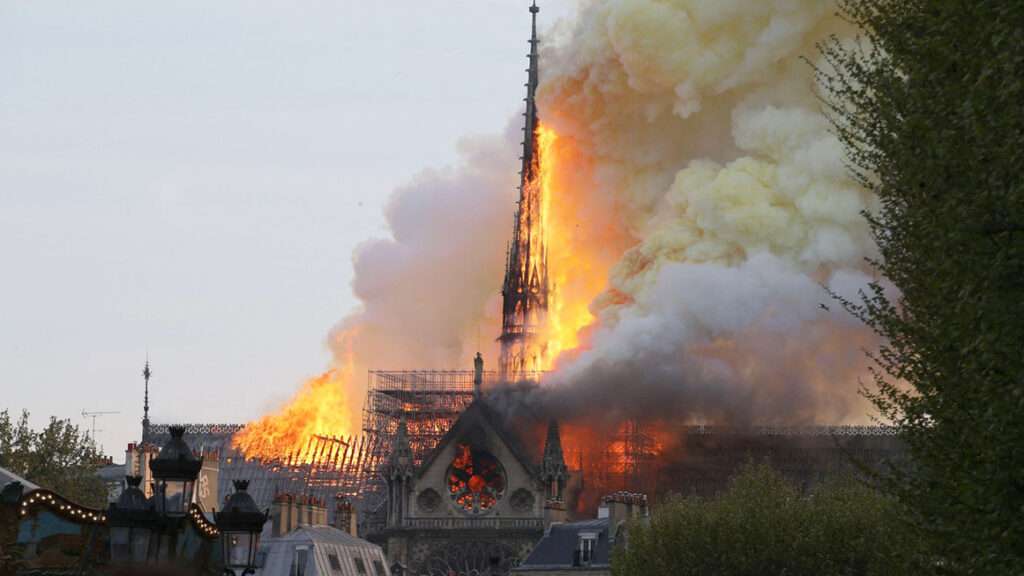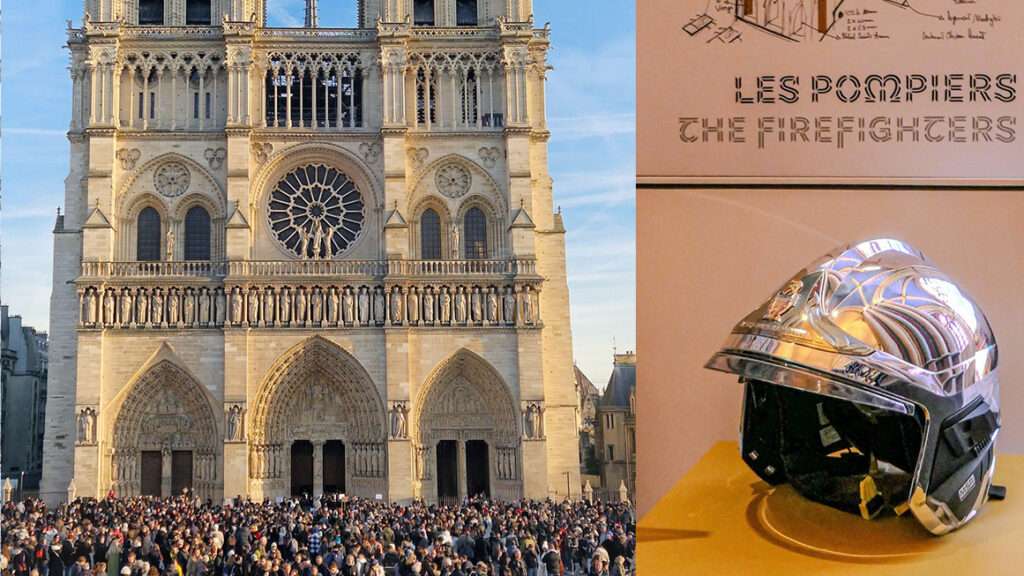This is part of Reason‘s 2025 summer travel issue. Click here to read the rest of the issue.
Fire nearly destroyed the Notre-Dame Cathedral in 2019. Thanks largely to an outpouring of private donations, the cathedral now shines more brilliantly than it has for centuries.
My personal history with the cathedral stretches back to my first Europe on $10 a Day backpacking and youth hosteling visit in the late 1970s. Advising me to eschew faux sophistication, my boss at The New Yorker urged me to visit popular sites like Notre-Dame because “they are tourist attractions for good reasons.” He was entirely correct. It was everything a youngish first-time traveler to Europe expected of an ancient gothic cathedral: gray, a bit dingy, yet magnificent.
Owing to sheer good fortune, subsequent visits to the cathedral afforded me some very happy memories. One occurred after interviewing Friedrich Hayek in Freiburg, Germany, for Forbes in 1989. I subsequently traveled to Paris to visit friends but was at loose ends for an evening. So I decided to stroll down to the Île de la Cité to revisit Notre-Dame. When I got there, I noticed that a lot of people were quietly streaming into the shrine. Intrigued, I joined them. I was handed an unlit white candle upon entering the entirely dark interior. Cluelessly, I had stumbled upon the Easter vigil service.
Bearing in mind the frailties of memories, what I recall is that as the organ began playing, a single flame was ignited at the altar. As the choir began singing, the initial spark was touched to candle after candle spreading through the crowd, eventually illuminating the gloomy vaulted interior with flickering incandescence. Even as an unbeliever, I found the experience beautiful and mysterious.


My second sublime experience occurred in December 2015, when I was reporting from the U.N. Climate Change Conference that produced the Paris Climate Change Agreement. My wife Pamela arrived at the end of the conference, and I suggested that we attend the vespers service at the cathedral. It was lovely as usual. We noticed that no one was leaving. Curious, we stayed seated until the church filled. We heard knocking three times on the gigantic doors of the central Last Judgment portal. We later learned that this had been done by the Archbishop of Paris wielding his crozier. After the third series of knocks, the doors opened wide to admit a long procession of prelates. Again cluelessly, we were privileged to witness the elaborate rituals celebrating Pope Francis’ declaration of the Extraordinary Jubilee Holy Year of Mercy.
In 2019, even as the fire burned, prominent corporate leaders pledged hundreds of millions of dollars to repair and restore the much beloved landmark. So far, they—and hundreds of thousands of other donors around the world—have supplied nearly $900 million to the project.
Bernard Arnault, head of the luxury brand conglomerate LVMH—think Givenchy, Tiffany, and Chandon—donated 200 million euros. François-Henri Pinault (CEO of the Kering luxury group—think Gucci, Yves Saint Laurent, and Maui Jim) and his family gave 100 million euros. The oil company Total-Energies, at the direction of CEO Patrick Pouyanné, contributed 100 million euros. Through their foundation, the Bettencourt family, the heirs of L’Oréal, donated 200 million euros. Smaller but significant corporate donations came from the French insurer AXA (10 million euros), the advertising giant JCDecaux (20 million euros), and the French bank BNP Paribas (20 million euros).
Among the 340,000 individual private donors from around the world, Americans were notably generous, with around 45,000 people contributing more than $62 million toward restoring the cathedral. “If the millions of visitors to Paris and France have seen one Gothic cathedral, it is probably Notre Dame, and the fire of April 15, 2019, no doubt activated the memory of that encounter and the bond to the cathedral,” Michael Davis, a board member of the New Hampshire–based nonprofit Friends of Notre-Dame de Paris, told Barron‘s. It certainly did for me.


While the building’s interior had been gloriously renewed by the time I visited in May, scaffolding still covers part of the exterior—especially toward the rear, where the chapel and the choir are located. The $140 million euros still remaining will be spent completing those exterior repairs over the next two to three years.
Financed by the private donations of believers, construction of Notre-Dame began in 1163 and was completed 182 years later in 1345. A tribute in the cathedral’s apse near the Crown of Thorns reliquary recognizes that the recent reconstruction is owed “to the 340,000 donors from France and all over the world who, even as the fire blazed during the night, demonstrated their attachment to the cathedral through an incredible display of generosity.” Thanks to their liberality, “Notre Dame de Paris has been reborn from the ashes and is even more beautiful.”
This article originally appeared in print under the headline “Notre-Dame Reborn from the Ashes.”

